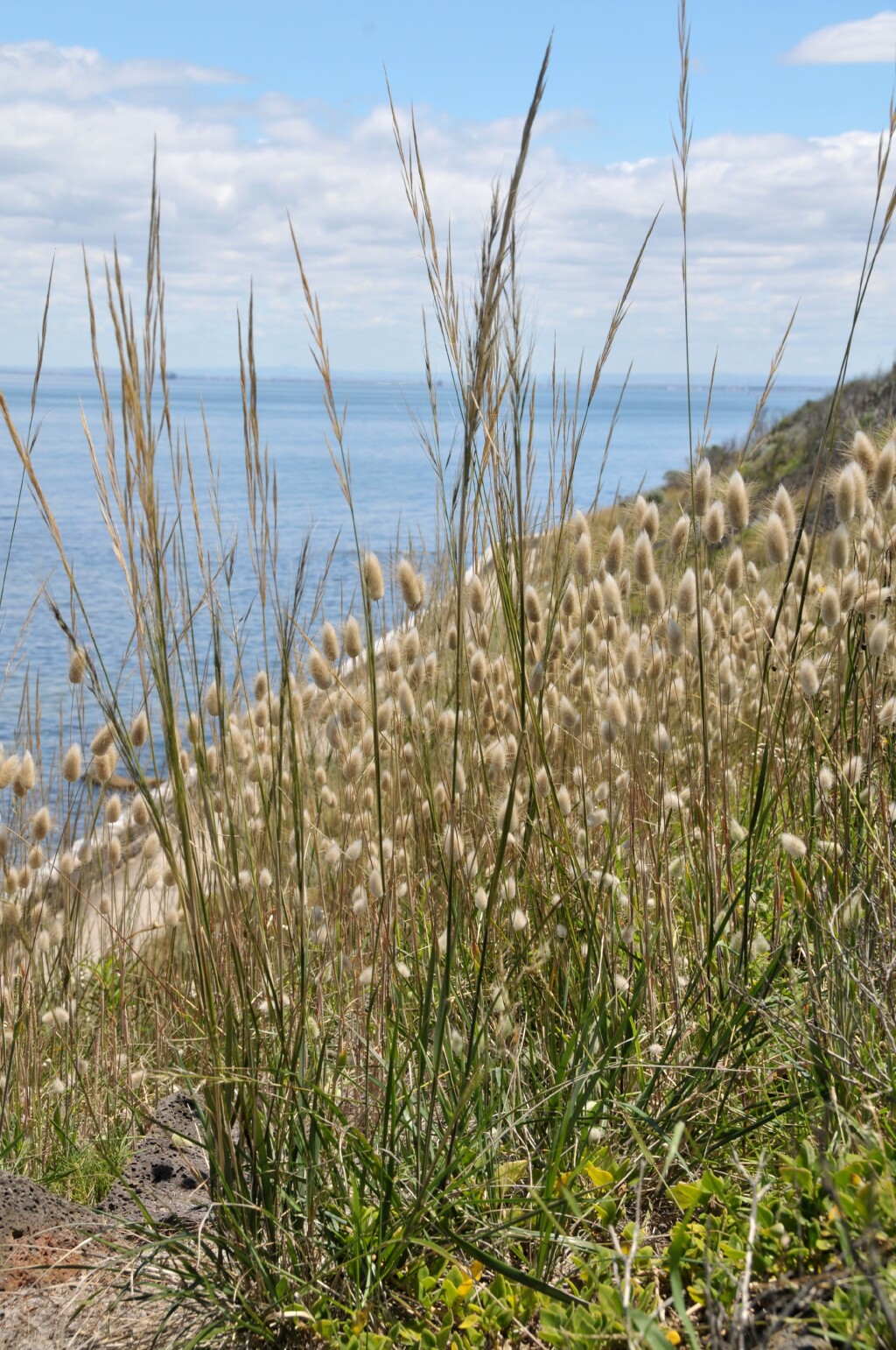Austrostipa flavescens
(Labill.) S.W.L.Jacobs & J.EverettTufted, shortly rhizomatous perennial, culms erect, to 1.2 m high, nodes pubescent to almost glabrous. Leaves glabrous to densely pubescent; blade flat to inrolled to 70 cm long and 7 mm broad when flattened, erect to flexuose; ligule ciliate, to 0.6 mm long. Inflorescence typically a dense, slender panicle to 30 cm long, or occasionally inflorescence open and sparse. Glumes 10–15 mm long, rarely purplish, acuminate, membranous throughout, subequal, or the lower longer by up to 3 mm than upper; lemma 6–9 mm long, maturing to dark brown or black, granular to minutely scabrous near summit, lightly covered with semi-appressed golden hairs; coma erect with hairs no longer than those of the body of the lemma; callus 1.6–3 mm long; awn twice bent, 40–70 mm long, 9–18 mm to the first bend, column shortly pubescent; palea slightly shorter than lemma, silky-hairy along the centre line. Flowers Oct.–Dec.
Wim, GleP, Brid, VVP, GipP, OtP, WaP, DunT, EGL, EGU, WPro, HSF, OtR, Strz. Also WA, SA, NSW, Tas. Common along the coastline where usually occurring on vegetated dunes, less commonly on e.g. limestone- or basalt-based soils away from the coast, for example in Eucalyptus microcarpa woodland near Mt Cottrell and at Eynesbury south of Melton. At some sites along the coast such as at Beaumaris and Black Rock both the dense and open panicle forms can grow together.
Walsh, N.G. (1994). Poaceae. In: Walsh, N.G.; Entwisle, T.J., Flora of Victoria Vol. 2, Ferns and Allied Plants, Conifers and Monocotyledons, pp. 356–627. Inkata Press, Melbourne.
 Spinning
Spinning




